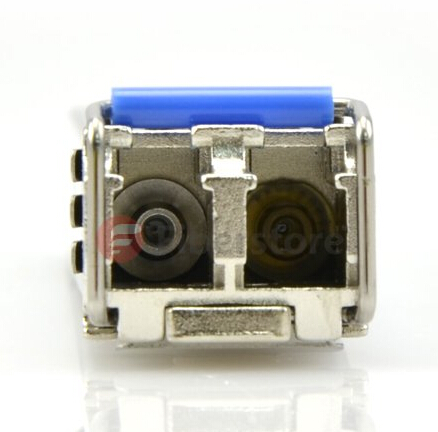Marketing
FAQs of SFP modules
Can I use SFP+ optics in SFP ports or use SFP optics in SFP+ ports?
Not all, it's depending on whether the SFP ports accept SFP+ optics (SFP+ 10GBASE Twinax cables and SFP+ modules) or not. However, most (not all) SFP+ ports accept SFP optics. Most 1Gb and 10Gb SFP+ optics only support a single speed (e.g. 10Gb optics can't run at 1Gb). As long as you have a 1Gb SFP at both ends you shouldn't have a problem.
The Summarize of SFP Module
The structure of SFP optical module are: laser, including transmitter and receiver, external fittings are: base, shell, PCBA, unlock pieces, TAB, card buckle, rubber plug, the other to help you identify the convenient, general using the color of the TAB to recognize the parameters of the module type.
According to the rate divided 155M/622M/1.25G/2.125G/4.25G/8G/10G, 155M and 1.25G currently available on the market use more, 10G technologies are maturing, demand positive attitude to rise development is the next major optical module products.
According to the wavelength divided 850nm/1310nm/1550nm/1490nm/1530nm/1610nm, as SFP 850nm wavelength multimode transmission distance 2km less frequent like Cisco GLC-SX-MM; 1310/1550nm wavelength for Single-mode, the transmission distance 2KM above, relatively speaking, these 3 wavelengths lower cost compared to the other.
If you can't know the bare module is simple to confuse the normal distinction between manufacturers will pull rings in color, take CWDM SFP module as an example: black pull ring for multimode wavelength is 850nm; blue wavelength 1310nm module; yellow is the wavelength of 1550nm module; purple is the wavelength of 1490nm module.
Why choose compatible SFP Module
The simple answer to this query (as most other suppliers will explain) is cost, but that's just one of the reasons to purchase a compatible SFP, SFP+ or XFP fiber optic transceiver. For example in a scenario where gigabit speed is required to run across a point-to-point link, the distance between the link length is assessed and an appropriate SFP transceiver module native to the host device is chosen. If a Cisco platform was in situ then the selection of module will be limited by among the following: 550meter (GLC-SX-MMD), 10km (GLC-LH-SMD), 40km (GLC-EX-SMD) or the maximum 70km (GLC-ZX-SMD). Using a compatible SFP you can choose from a variety of distance limits from 550meters up to 100km in numerous increments with distances of 160km being achievable on the top product lines.
Another advantage of use compatible SFP transceivers is the freedom to tailor the transceiver to your individual requirement.
- Custom serial numbers can be added both to the product label and also hard coded to the device itself.
- Customer Logos can be added to the products.
Latches can be color coded for high density link identification Fiberstore also provide a recoding service in China, this specific service means existing SFP's can be adapted if the host device is to be changed. In some instances, even cross-device compatibility is quite possible.

SFP transceiver is a very popular format thatís recommended by a large number of fiber optic component providers. These businesses carry SFP transceivers for those Cisco and HP devices along with transceiver modules for many other manufacturers. Especially, you can find a full product line of our New HP SFP modules, such as J4858C, J4859C, JD118B, and JD092B, etc. Our HP SFP and SFP+ moduels are 100% compatible with a good price and enjoy same-day shipping.
Post je objavljen 05.05.2015. u 09:37 sati.